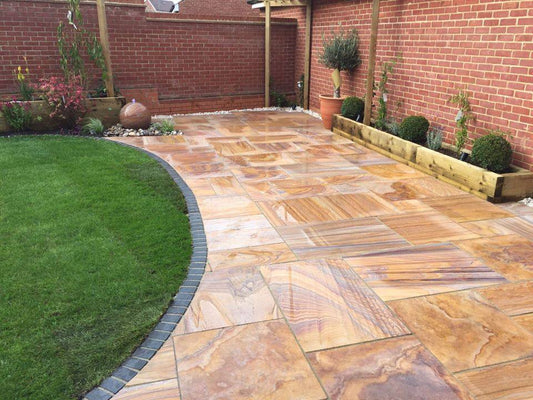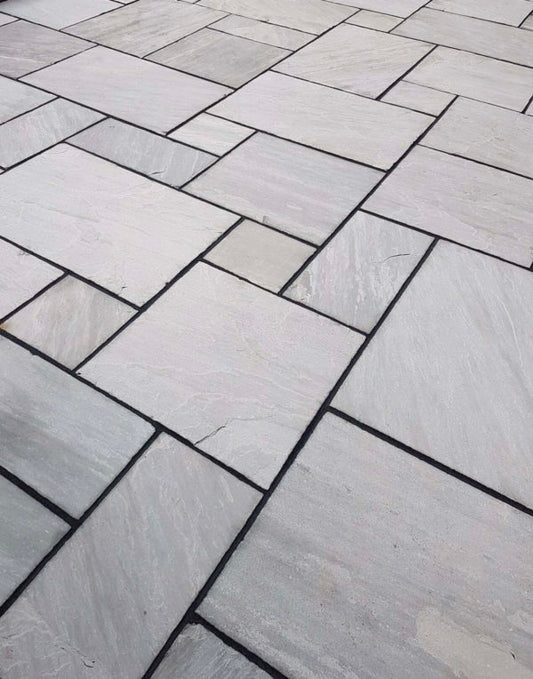
Where Does Natural Sandstone Come From? How are they made?
Share
Sandstone begins deep underground, formed over eras as minerals and sediments fused under pressure. Powerful forces of wind and water eroded ancient mountains, with their remnants accumulating through the ages. Over long stretches of geological time, these massive deposits solidified into stone. But how do strong yet elegantly grained blocks emerge from their resting places? Where does the journey begin for sandstone destined to enhance homes and buildings worldwide?
How Is Sandstone Extracted From Quarries?
Quarries across India supply premium sandstone to global builders and landscapers. Careful selection of sites balances critical factors: chemical composition indicating durability, natural aesthetic variations like ripples or fossils that showcase a formation’s uniqueness, estimated yields for long-term production capacity, and ethical mining practices to protect local ecosystems and quarry workers. But what methods actually extract the stones from these sites?
Specialized heavy equipment and expert teams work in sync to harvest stone from the quarry walls. Hydraulic excavators-tip precision chisels against natural cracks and seams in the surface, striking strategically to leverage physics and dislodge blocks weighing many tons. The massive extracted pieces then make their way to processing, destined to become one-of-a-kind pavers. Efficiency steers each phase, as crews maximize usable stone from the quarry while minimizing dangerous waste.
Where Do the Raw Stone Blocks Go Next?
Enormous blocks trucked from Indian quarries transform into polished pavers at specialized facilities. Diamonds may be a girl’s best friend, but diamond-edged saws are a sandstone slab’s greatest ally. These gangs of giant blades can sculpt a 10-ton giant into refined flooring in a matter of hours. How exactly does rough stone become a refined fixture?
The mega-blocks anchor firmly in place so diamond saws can work their magic cutting the sandstone. Programmable gang saws first shear away massive sides and tops to form a basic shape. Although sandstone’s compression strength compares to concrete, diamonds easily best this sedimentary giant. More precise saws then cut calibrated measurements; uniform thicknesses for level installation. Finally, specialized saws carve any custom designs like curves, bevels, or decorative edges.

What Finishing Steps Complete the Signature Sandstone Look?
Shaping the rough brick to standardized sizes completes just part of a paver’s journey. Carefully refining the edges and applying finishes unlock each stone’s unique potential. But what methods bring out sandstone’s best qualities?
Whether aiming for a modern vibe or vintage charm, sandstone’s workability accommodates multiple textures. Skilled masons perfect techniques passed down through generations. They chip sides with traditional hand tools for irregular contours reminiscent of naturally weathered stone. Tumbled finishing bathes bricks in water and abrasives. As the batch rotates in drums for days, collisions gradually soften rigid edges. Precisely calibrated cuts retain sharp angles and smooth faces mirroring quality processed goods. Sealing completes certain pavers, enhancing weather resistance and intensifying natural colours. These meticulous finishing touches complete the transformation.
What Makes Indian Sandstone a Popular Paving Choice?
Pavers from India elevate spaces across the world for good reason, with their Indian Sandstone Paving. Attractive sandstone paving colours and textures blend seamlessly into any design vision. Balancing durability with easy maintenance, sandstone brings long-lasting quality within reach. On top of this Indian Sandstone paving is permeable, allowing it to absorb rain water. Moreover, its smooth yet slip-resistant surface qualifies it as dog-friendly paving, making it an excellent choice for pet owners. What final benefits solidify sandstone pavers as a premier choice?
What Are Some Popular Indian Sandstone Paving Types?
With India's vast sandstone deposits displaying stunning diversity, numerous distinctive varieties make ideal pavers. Which options suit different aesthetic visions? You can check ou this post to view some ideas for patios and paving.
Kandla Grey Sandstone: Quarried in the Kandla region of western India, this variety exhibits a cool dove grey tone. Occasional darker gray striations add depth to the neutral canvas. The elegant colouration blends seamlessly into modern or contemporary landscaping. Its density and longevity also make Kandla Grey sandstone well-suited for driveways and high-traffic zones. With understated beauty belying its ruggedness, Kandla Grey sandstone brings quiet sophistication to outdoor spaces.
Modak Sandstone: This extremely dense stone with tight grains comes primarily in attractive golden brown, yellow, black, and red/brown blends. The durability and scratch resistance ensure enduring quality.
Smooth Sandstone: Smooth texture and uniform appearance offer versatile styling.
Mint Fossil Sandstone: Fossilized impressions scattered across a muted gray/green base color create intriguing depth. The fossils' organic shapes craft a timeless aesthetic.
Camel Sandstone: As the name suggests, weathered beige camels seem to have traversed this stone eons ago based on its sandy hue. Excellent slip resistance benefits outdoor installation.
Ivory Sandstone: A pale creamy ivory backed by light gray echoes fine marble without the fragility or price. Glamorous neutrality pairs with any landscape colour.






Sandstone trends may come and go, but selections like these remain sought-after for balancing aesthetics, economics, and durability. With thoughtful finishing applied to the raw stone’s inherent qualities, the pure uniqueness of Indian sandstone perseveres, bringing personal landscaping visions to life.






